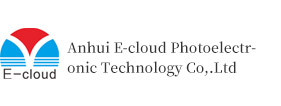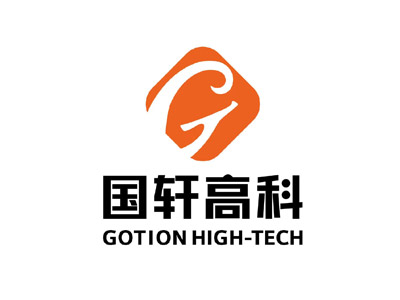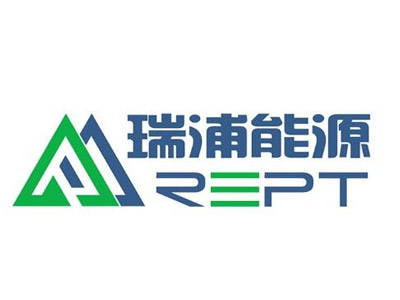More
CUSTOMS
Question
Complete explanation of thermal conductive graphite heat dissipation fins in die-cutting materials!
In today's trend towards ultra-thin, intelligent, and multifunctional consumer electronics, the increasing power and thinner products are increasingly revealing the issue of how heat dissipates. Due to its outstanding thermal conductivity characteristics, thermal conductive graphite sheets have received increasing attention and are widely used in smartphones, ultra-thin PCs, LED TVs, and other fields.
Due to its unique grain orientation, thermal conductive graphite sheets conduct heat uniformly in two directions (X-Y axis and Z axis). The layered structure can be well adapted to the surface fluctuations of devices after processing. The unique crystal structure and processing method not only provide uniform heat conduction, but also provide thermal isolation and shielding of heat sources and components, significantly improving the performance of electronic products.
What is a thermal conductive graphite sheet?
Thermal conductive graphite sheet is a new thermal conductive and heat dissipating material. It conducts heat evenly in both directions, shields heat sources and components, and improves the performance of consumer electronics. With the upgrading and upgrading of electronic products, there is an increasing demand for heat dissipation management in accelerated, mini, highly integrated, and high-performance electronic devices.
This new natural graphite solution has high heat dissipation efficiency, small footprint, and light weight. The color is generally black, and the material is natural graphite. After delicate processing, the thermal conductivity in the horizontal direction can reach up to 1500W/M-K. Commonly used in ICs, CPUs, MOSs, LEDs, heat sinks, LCD-TVs, laptops, communication devices, wireless switches, DVDs, handheld devices, etc.
Classification of thermal conductive graphite sheets:
Graphite sheets are divided into natural graphite sheets and artificial graphite sheets!
Natural graphite heat dissipation film has high thermal conductivity, easy construction, flexibility, and no gas liquid permeability. Graphite chips do not age and embrittle, and are suitable for most chemical media. Generally, the heat conductivity is between 700-1200W/m.k. The disadvantage of natural graphite sheet is that it cannot be too thin. Generally, the finished product is as thin as 0.1MM thick, so the market share of natural graphite is decreasing. At the same time, due to the structural factors of natural graphite itself, the heat dissipation effect of natural graphite is relatively weak.
Artificial graphite can be made very thin and has excellent heat dissipation effect, with a thermal conductivity of 1000-1500W/m.k. This is mainly reflected in the fast heat dissipation speed, but the price of artificial graphite is relatively high. In the increasing pursuit of quality in the mobile phone market, synthetic graphite chips are also highly favored.
Principle of graphite sheet heat dissipation:
A typical thermal management system is composed of an external cooling device, a radiator, and a thermal cross-section, taking smartphone products as an example:
1. Heat is quickly transmitted to the casing and frame through the plane of the thermal conductive graphite sheet;
2. Enhanced infrared radiation effect on the surface of thermal conductive graphite sheets;
3. Thermal conductive graphite sheets expand the surface heat dissipation area and quickly dissipate hot spots.
Related parameters of thermal conductive graphite sheet:
Thin film macromolecular compounds can be made into graphitized films under high temperature and high pressure by chemical methods, because carbon is a non-metallic element, but it has the conductivity and thermal conductivity of metal materials, as well as the plasticity like organic plastics, and also has some good process properties such as special thermal properties, chemical stability, lubrication and coating on solid surfaces.
Therefore, thermal conductive graphite has been widely used in many fields such as electronics, communication, lighting, aviation, and national defense and military industry. Graphite thermal conductive materials provide a comprehensive and high-performance unique solution for the heat management industry.
Applicable scope of thermal conductive graphite sheet:
Thermal conductive graphite materials bring new technological solutions to the increasingly demanding industrial heat dissipation field through a series of different heat management solutions. Thermal conductive graphite material products provide innovative new technologies for electronic industry heat management. Thermal conductive graphite provides superior thermal conductivity while reducing device weight. The thermal conductive graphite heat dissipation solution is a new application solution for thermal design.
The surface of thermal conductive graphite can be combined with other materials such as metal, plastic, and adhesive to meet more design functions and needs.
High thermal conductivity: Graphite heat sink can smoothly adhere to any flat and curved surface, and can be cut in any form according to customer needs.
Processing and formation of thermal conductive graphite sheets:
In order to better adapt to the undulating surfaces of electronic devices and circuit modules, it is necessary to perform certain processing treatments on thermal conductive graphite sheets. The main processing methods are:
1. Back adhesive: To better adhere to IC and circuit boards, perform back adhesive processing on the surface of thermal conductive graphite sheets;
2. Back film: In some circuit designs that require insulation or insulation, in order to achieve better functional optimization, a back film treatment is applied to the surface of graphite sheets.
We can select suitable processing methods based on the actual needs of the product.
Application of thermal conductive graphite sheets in smartphones:
The CPU speed, memory capacity, and operating system performance of smartphones are constantly increasing, and the ultra-thin body gradually increases the demand for heat dissipation. Currently, more and more smartphones sold in the domestic market are using graphite sheets as thermal conductive materials, such as Apple, Samsung, HTC, Xiaomi, and so on.
Due to its unique grain orientation, thermal conductive graphite sheets conduct heat uniformly in two directions (X-Y axis and Z axis). The layered structure can be well adapted to the surface fluctuations of devices after processing. The unique crystal structure and processing method not only provide uniform heat conduction, but also provide thermal isolation and shielding of heat sources and components, significantly improving the performance of electronic products.
What is a thermal conductive graphite sheet?
Thermal conductive graphite sheet is a new thermal conductive and heat dissipating material. It conducts heat evenly in both directions, shields heat sources and components, and improves the performance of consumer electronics. With the upgrading and upgrading of electronic products, there is an increasing demand for heat dissipation management in accelerated, mini, highly integrated, and high-performance electronic devices.
This new natural graphite solution has high heat dissipation efficiency, small footprint, and light weight. The color is generally black, and the material is natural graphite. After delicate processing, the thermal conductivity in the horizontal direction can reach up to 1500W/M-K. Commonly used in ICs, CPUs, MOSs, LEDs, heat sinks, LCD-TVs, laptops, communication devices, wireless switches, DVDs, handheld devices, etc.
Classification of thermal conductive graphite sheets:
Graphite sheets are divided into natural graphite sheets and artificial graphite sheets!
Natural graphite heat dissipation film has high thermal conductivity, easy construction, flexibility, and no gas liquid permeability. Graphite chips do not age and embrittle, and are suitable for most chemical media. Generally, the heat conductivity is between 700-1200W/m.k. The disadvantage of natural graphite sheet is that it cannot be too thin. Generally, the finished product is as thin as 0.1MM thick, so the market share of natural graphite is decreasing. At the same time, due to the structural factors of natural graphite itself, the heat dissipation effect of natural graphite is relatively weak.
Artificial graphite can be made very thin and has excellent heat dissipation effect, with a thermal conductivity of 1000-1500W/m.k. This is mainly reflected in the fast heat dissipation speed, but the price of artificial graphite is relatively high. In the increasing pursuit of quality in the mobile phone market, synthetic graphite chips are also highly favored.
Principle of graphite sheet heat dissipation:
A typical thermal management system is composed of an external cooling device, a radiator, and a thermal cross-section, taking smartphone products as an example:
1. Heat is quickly transmitted to the casing and frame through the plane of the thermal conductive graphite sheet;
2. Enhanced infrared radiation effect on the surface of thermal conductive graphite sheets;
3. Thermal conductive graphite sheets expand the surface heat dissipation area and quickly dissipate hot spots.
Related parameters of thermal conductive graphite sheet:
Thin film macromolecular compounds can be made into graphitized films under high temperature and high pressure by chemical methods, because carbon is a non-metallic element, but it has the conductivity and thermal conductivity of metal materials, as well as the plasticity like organic plastics, and also has some good process properties such as special thermal properties, chemical stability, lubrication and coating on solid surfaces.
Therefore, thermal conductive graphite has been widely used in many fields such as electronics, communication, lighting, aviation, and national defense and military industry. Graphite thermal conductive materials provide a comprehensive and high-performance unique solution for the heat management industry.
Applicable scope of thermal conductive graphite sheet:
Thermal conductive graphite materials bring new technological solutions to the increasingly demanding industrial heat dissipation field through a series of different heat management solutions. Thermal conductive graphite material products provide innovative new technologies for electronic industry heat management. Thermal conductive graphite provides superior thermal conductivity while reducing device weight. The thermal conductive graphite heat dissipation solution is a new application solution for thermal design.
The surface of thermal conductive graphite can be combined with other materials such as metal, plastic, and adhesive to meet more design functions and needs.
High thermal conductivity: Graphite heat sink can smoothly adhere to any flat and curved surface, and can be cut in any form according to customer needs.
Processing and formation of thermal conductive graphite sheets:
In order to better adapt to the undulating surfaces of electronic devices and circuit modules, it is necessary to perform certain processing treatments on thermal conductive graphite sheets. The main processing methods are:
1. Back adhesive: To better adhere to IC and circuit boards, perform back adhesive processing on the surface of thermal conductive graphite sheets;
2. Back film: In some circuit designs that require insulation or insulation, in order to achieve better functional optimization, a back film treatment is applied to the surface of graphite sheets.
We can select suitable processing methods based on the actual needs of the product.
Application of thermal conductive graphite sheets in smartphones:
The CPU speed, memory capacity, and operating system performance of smartphones are constantly increasing, and the ultra-thin body gradually increases the demand for heat dissipation. Currently, more and more smartphones sold in the domestic market are using graphite sheets as thermal conductive materials, such as Apple, Samsung, HTC, Xiaomi, and so on.


